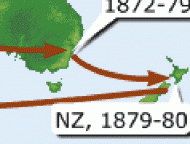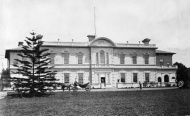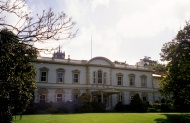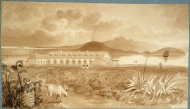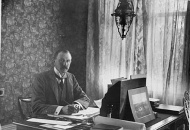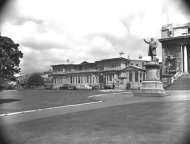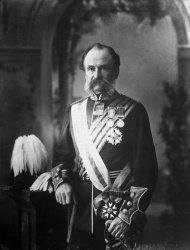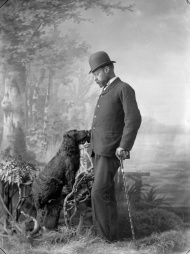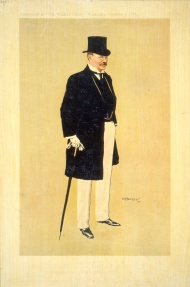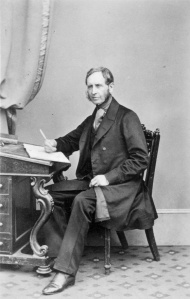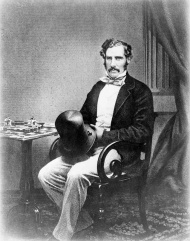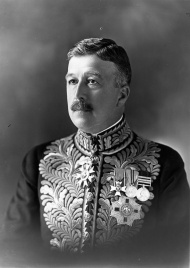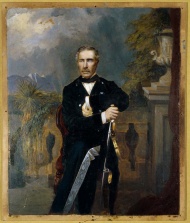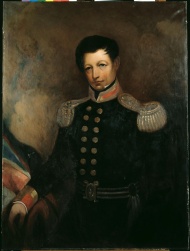Events In History
-
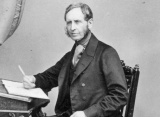 30 April 1865Former Governor FitzRoy dies by suicide
30 April 1865Former Governor FitzRoy dies by suicideRobert FitzRoy, the second governor of New Zealand (1843-45), took his own life at his home near London. Opinion on his governorship has always been divided. Read more...
-
 31 December 1853Grey leaves New Zealand after first term as governor
31 December 1853Grey leaves New Zealand after first term as governorDuring his first term as governor, George Grey was praised for ending the Northern War and obtaining land from Māori, but he angered settlers by delaying the implementation of a constitution that would have given them some political power. Read more...
Articles
History of the Governor-General
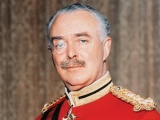
New Zealand has had a governor or (from 1917) a governor-general since 1840. The work of these men and women has reflected the constitutional and political history of New Zealand in many ways.
-
Page 2 – Modern duties
The governor-general's duties are divided into three functions: ceremonial, community and constitutional.
-
Page 3 – Crown colony era
New Zealand became a British colony in 1840, legitimised by the Treaty of Waitangi and Lieutenant-Governor William Hobson's 21 May declaration of sovereignty.
-
Page 4 – Responsible government
From the 1840s settlers demanded a say in government. Governor George Grey suspended an overly elaborate constitution in 1846, but the New Zealand Constitution Act 1852 gave
-
Page 5 – Splendid ornamentals
With the appointment of Lord Onslow in 1889, a new type of governor took up residence in Government House.
Governors and Governors-General

New Zealand has had 16 resident governors and 22 governors-general. Two early governors were called governor-in-chief.
-
Page 2 – Selection process
In the days of the Empire, the British government appointed New Zealand's governors and governors-general. New Zealand had no say.
-
Page 3 – Career paths
As the job evolved over time, so did the type of person needed to govern successfully. Between 1840 and 1853, when governors ruled personally, they were junior navy or army
-
Page 4 – Genes, gender and age
From 1840 until 1972, New Zealand's governors and governors-general were British.
Parliament Buildings
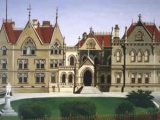
Parliament buildings have been modified, destroyed by fire, half-built and restored; the parliamentary places and spaces have formed an important part of New Zealand's history.
- Page 2 - First Parliament buildingsAuckland was a bustling place in 1854 when Parliament met there for the first time. The buildings were located in paddocks on what was then the edge of town, Constitution Hill,
The House of Representatives
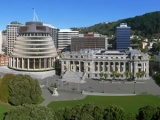
New Zealand's Parliament dates back to 1854, just 14 years after the signing of the Treaty of Waitangi and the beginning of the European settlement of the country. For most of its history as a nation state, New Zealand has had some form of elected government.
- Page 3 - ParliamentToday there are two parts to Parliament – the House of Representatives (or the Lower House) and the Governor-General, but between 1854 and 1951 there was a third part, the
Notes for My Successor
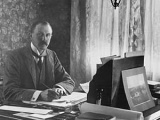
Until the late 1960s New Zealand's governors-general were British, mainly minor aristocrats, or admirals or generals.
-
Page 5 – A home away from 'Home'
Government House in Wellington is a busy place. Every year it hosts about 15,000 guests at 200 functions.
-
Page 6 – Pay and perks and handy hints
The colonial government cut the vice-regal salary and allowances from £7500 to £5000 in the late 1880s, just when the declining British aristocracy was looking to the
-
Page 8 – From lieutenant-governor to governor-general
An outgoing governor-general's 'Notes for My Successor' have had their day. New Zealand governors-general already know the country and have no need to pack their household
Biographies
-
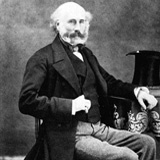 Browne, Thomas Robert Gore
Browne, Thomas Robert Gore
Biography of Colonial Governor and Soldier, Thomas Gore Browne
Read more... -
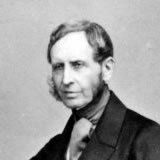 FitzRoy, Robert
FitzRoy, Robert
Robert FitzRoy, who first visited New Zealand as commander of the Beagle in 1835, was Governor from 1843, succeeding the late William Hobson. He served until 1845, when he was recalled to Britain and replaced by George Grey.
Read more... -
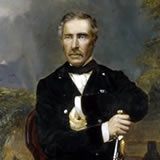 Grey, George
Grey, George
Sir George Grey was our only politician for whom the premiership was an anticlimax. He governed autocratically from 1845 to 1853 (greatly shaping our constitutional arrangements) and returned as governor in 1861.
Read more... -
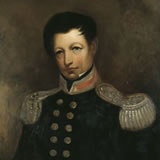 Hobson, William
Hobson, William
After a lengthy Royal Navy career in which he saw action in the Napoleonic Wars and was twice captured by pirates in the Caribbean, William Hobson (1792-1842) became New Zealand's first Governor.
Read more...
Related keywords
- WW1
- WW1 home front
- red cross
- lord liverpool
- lady liverpool
- governor-general
- domestic staff
- charles bledisloe
- bernard freyberg
- clothing
- alcohol
- lord ranfurly
- british empire
- australia
- cyril newall
- government
- george grey
- northern war
- scottish
- irish
- auckland city
- auckland university
- architecture
- thomas gore browne
- legislative council
- liberal party
- lord onslow
- shipping
- historic places
- robert fitzroy
- waitara
- new zealand wars
- painting
- parliament buildings
- wellington city
- bellamys
- william jervois
- parliament
- lord plunket
- transport
- empire day
- wairau incident
- maori land
- george gipps
- new zealand company
- land claims
- treaty of waitangi
- william hobson
- premiers
- provinces
- queen elizabeth
- land confiscation
- kingitanga
- colonisation
-
Red Cross workers visited by Lord and Lady Liverpool during the First World War.


